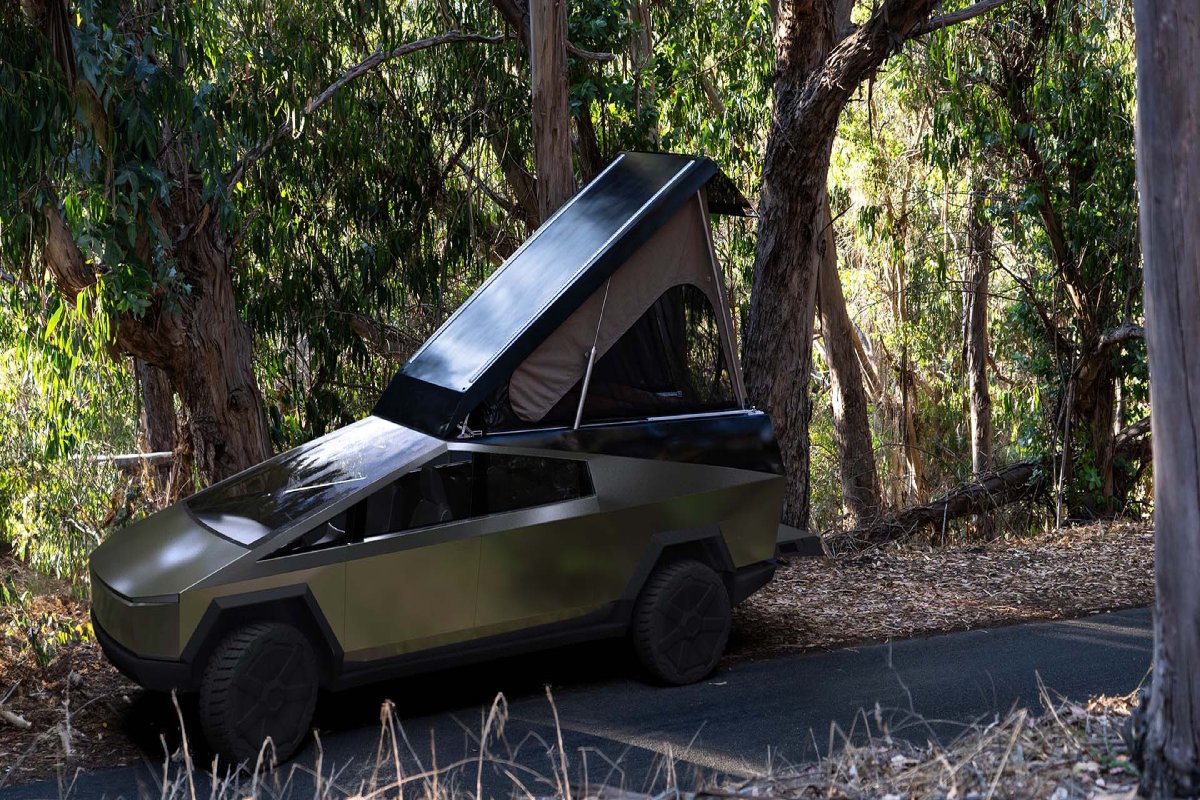Skift Take
At the moment, Americans can't imagine camping in the woods using an electric vehicle. Maybe the cybertruck can change that.
Telsa’s new cybertruck will be pricey and look weird – but also cool and futuristic. And if you go camping with it, you can use a microwave in silence.
Tesla CEO Elon Musk unveiled the vehicle Thursday at an event at the company’s factory in Austin, Texas. “What we have here is a truck that’s better than a truck,” said Musk. Production of the Tesla Cybertruck had been repeatedly delayed.
The Tesla Cybertruck will bring electric vehicles into the world of camping, said Lee Wilkerson, founder and head engineer of Space Campers, which is building a camping wedge for the new vehicle.
Campers can use the car battery to power accessories, such as cooktops and electric-water heaters. With gas-powered trucks, you’d have to bring your own fuel like a propane tank. Plus, without a tank, you have more space to bring more items, said Wilkerson.
There’s also more silence compared to traditional gas trucks. “If you go into a campsite and somebody has their camper running and they’re AC going, you hear their diesel or their gas generator running all night and all day, and it kind of ruins the peacefulness of camping,” said Matthew Donegan-Ryan, a longtime Tesla shareholder who’s owned 13 Teslas. He’s an event industry mergers and acquisitions advisor.
In 2024, Tesla says it will deliver the dual motor AWD model at $68,890 and the tri-motor Cyberbeast version at $96,390. In 2025, it will plans a rear-wheel drive single-motor version for $49,890.
“It’s certainly not a cheap truck,” said Wilkerson.
Tesla also offers a basecamp pack for $2,975. It includes a tent that can be mounted on the cybertruck bed, with room for storage underneath.
Space Campers, a private company, hopes to debut its cybertruck wedge in the second quarter of next year. “We’re just trying to aim to build one for the cyber trucks so that truck can kind of do all the things no trucks have been able to for the last couple decades,” said Wilkerson. The price for the wedge has not been made public.
Enough Power to Not Be Stranded in the Woods
Camping with an electric vehicle faces a challenge. In the U.S., there’s a reluctance to use electric vehicles on long road trips because there isn’t an extensive charging network. Charging stations tend to be scattershot and more concentrated in urban areas.
“Most of it is sort of the fear that you’re going to run out of power when you’re out in the middle of the wilderness,” said Wilkerson. “They want to have this feeling of safety.”
The cybertruck’s standard range with the dual motor is 340 miles. “If you’re going camping 340 miles, you can drive from breakfast time until the mid-afternoon before you need to stop and charge,” said Donegan-Ryan.
The Daily Newsletter
Our daily coverage of the global travel industry. Written by editors and analysts from across Skift’s brands.
Have a confidential tip for Skift? Get in touch
Tags: tourism

